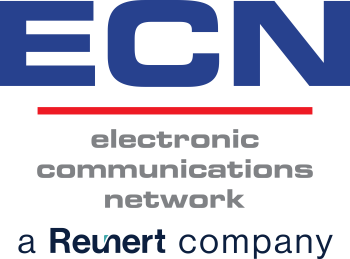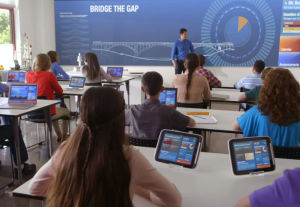South African schools are increasingly moving away from the technophobic, teacher-dominated classroom setting and taking advantage of the incredible educational opportunities afforded by the digital age. Interactive smart boards, cleverly designed lessons incorporating tablets and cellphones, as well as the collating of marks and overall assessments, all rely on internet connectivity.
However, one of the biggest problems facing schools is the number of devices connected to the internet. This is why so many schools look at fibre internet as the best solution for school connectivity.
Benefits of fibre for schools
For those of you who are new to the concept of fibre optics, they are essentially cables formulated from glass or fibre threads which transmit messages onto light waves. Traditionally, ADSL lines transmitted information via copper cables which, while effective for the purpose, do come with a range of difficulties – black market copper sales being a notable one in South Africa.
As society – and its schools – move towards a much more digitally-reliant way of life, our internet capabilities have had to increase. Enter fibre optics. There are so many associated benefits, and here are how they directly relate in a school setting.
1. Cost
South African school fees, particularly in the private sector, are quite high when considering comparative cost of living. This means that parents are unable to contribute even more towards school expenses which is why fibre is a cost-effective option long-term. Most major towns and cities throughout South Africa will have fibre optics laid, which means connecting the school to the fibre system is relatively easy. Fibre is much less expensive to maintain than copper, offers less lag than other connections and equates, overall to big savings. Something every school can appreciate.
Read more: The best business fibre providers
2. Greater bandwidth
In any school, regardless of its size, there are going to be a number of online users at any one time. The bandwidth – which is the maximum rate of data transfer – with ADSL lines decreases the more users are on the system. However, fibre will maintain a standardised bandwidth performance of up to 10GB per second or more, allowing for the dissemination of more information at any time. In a school setting, this is a major benefit.
3. Speed
Possibly one of the biggest selling points for fibre is its speed – and with good reason. Every South African internet user has experienced internet lag as you try to up or download a file, but fibre has completely revolutionised internet capabilities. In classrooms, where every teaching minute counts greatly towards the pupils’ ultimate success or failure, it’s imperative that fast internet is readily available. Teachers are able to quickly demonstrate a video clip or locate a past exam paper effortlessly, enhancing the in-classroom experience without wasting valuable teaching time. Fibre is also able to transmit information across vast distances – such as school campuses – without signal loss.
Read more: Why are you not using business fibre yet?
4. Security
Account information, personal details of minors, sensitive exam papers and school records are just some of the items a school will need to keep secure online. Copper cables can be hacked into, relatively easily, whereas fibre optics cannot. Once fibre has been cut, the entire system will shut down. This is an additional security measure that can benefit any South African school.
5. Reliability
One of the worst realities for any teacher is walking into a classroom only to discover that the planned lesson will simply not work because the internet is not co-operating. Likewise, a pupil who has prepared a valuable presentation could be let down by an inability to access the internet in the classroom. Fibre is a much more reliable connection, immune to environmental factors – such as lightning – and theft.
6. Manageability
Because fibre cables are much lighter, thinner and more durable than copper cables, they are easier to store, take up much less space physically and are better to handle. In school settings where space is at a premium, this is a huge bonus.
7. Enhanced teaching tools
There are so many online-based lesson plans that can be incorporated into a school once fibre has been installed. The internet is an endless wealth of education and, when properly used, can become an invaluable tool for any teacher and pupil. There is a move towards more pupil-driven learning using the vast teaching instructions available online, and this can all be unlocked through fibre.
It is well worth researching reliable internet service providers in the area to determine whether fibre optics can be installed at the school. The end result is essentially a better-performing school, with happier pupils, staff and parents.
ECN is a leading telecommunications partner in South Africa. ECN offers a broad set of cost effective voice, data and hosted services to meet our customers ever growing technological needs. Our market leading fibre solutions provide our customers with many options to suit their needs and pockets. Contact ECN today for leading telecommunications solutions.

